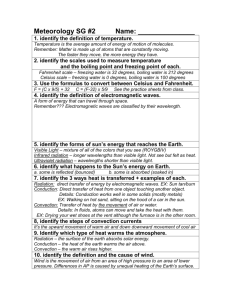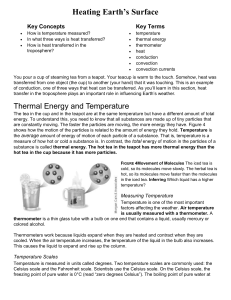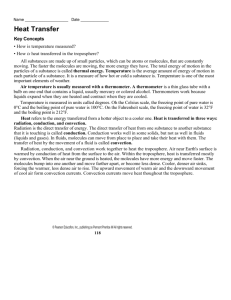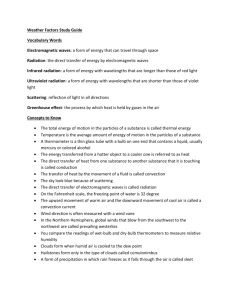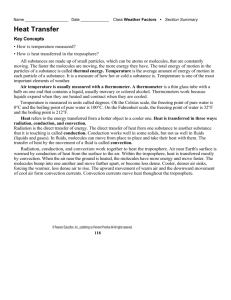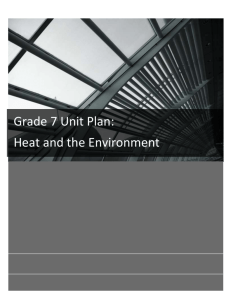Heat Transfer
advertisement
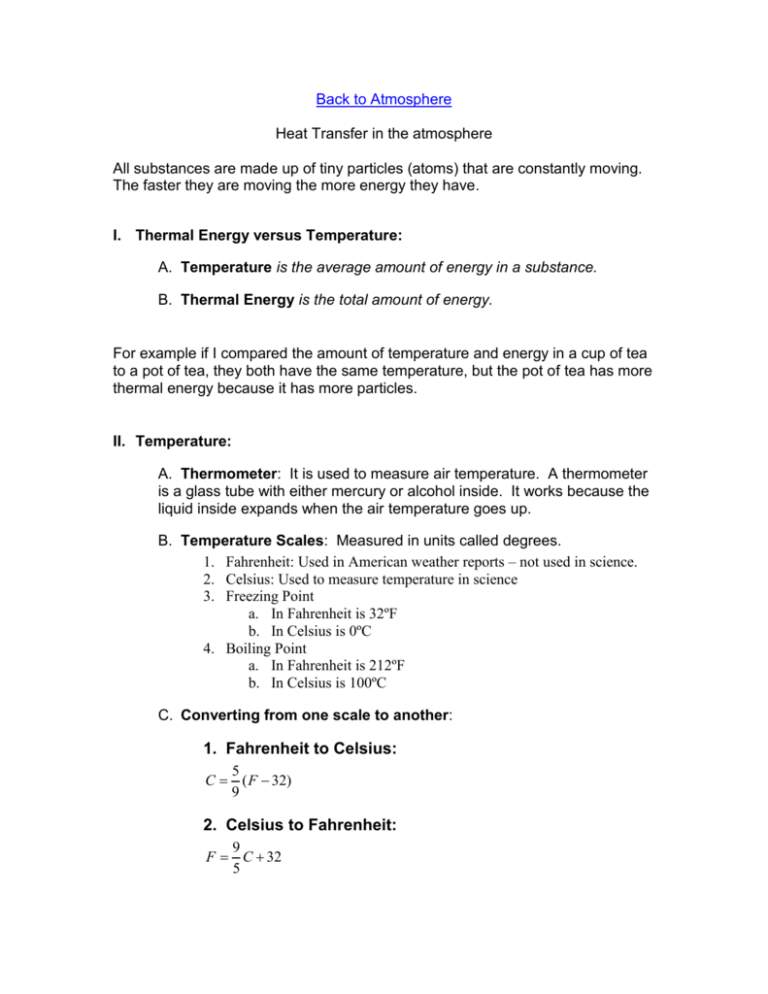
Back to Atmosphere Heat Transfer in the atmosphere All substances are made up of tiny particles (atoms) that are constantly moving. The faster they are moving the more energy they have. I. Thermal Energy versus Temperature: A. Temperature is the average amount of energy in a substance. B. Thermal Energy is the total amount of energy. For example if I compared the amount of temperature and energy in a cup of tea to a pot of tea, they both have the same temperature, but the pot of tea has more thermal energy because it has more particles. II. Temperature: A. Thermometer: It is used to measure air temperature. A thermometer is a glass tube with either mercury or alcohol inside. It works because the liquid inside expands when the air temperature goes up. B. Temperature Scales: Measured in units called degrees. 1. Fahrenheit: Used in American weather reports – not used in science. 2. Celsius: Used to measure temperature in science 3. Freezing Point a. In Fahrenheit is 32ºF b. In Celsius is 0ºC 4. Boiling Point a. In Fahrenheit is 212ºF b. In Celsius is 100ºC C. Converting from one scale to another: 1. Fahrenheit to Celsius: 5 C ( F 32) 9 2. Celsius to Fahrenheit: 9 F C 32 5 III. Heat Transfer: Radiation, Conduction and Convection A. Radiation: The direct transfer of energy by electromagnetic waves. It is felt as heat. Most heat that you feel is in infrared radiation. B. Conduction: The direct transfer of heat from one substance to another that is touching. The closer the molecules together the better they are at conducting heat. Conduction works well in solids (many metals) but not as well in liquids or gases. Air and water are not good conductors of heat. C. Convection: The transfer of heat by movement (changes in temperature) in liquids and gases is called convection. IV. Heating the Troposphere A. Radiation, Conduction and Convection work together to heat the troposphere. B. During Daytime: Radiation heats the Earth’s surface C. Air near the surface is warmed by radiation and conduction. Heat is not easily transferred by conduction through gases so only the first few meters are warmed by conduction. D. Most heat is transferred by convection currents in the troposphere. E. Convection Currents: The movement of air due to changes in temperature. Heat makes particles move further apart becoming less dense. This less dense air rises, until it is cooled in the upper atmosphere where it then falls. This creates an air current.
